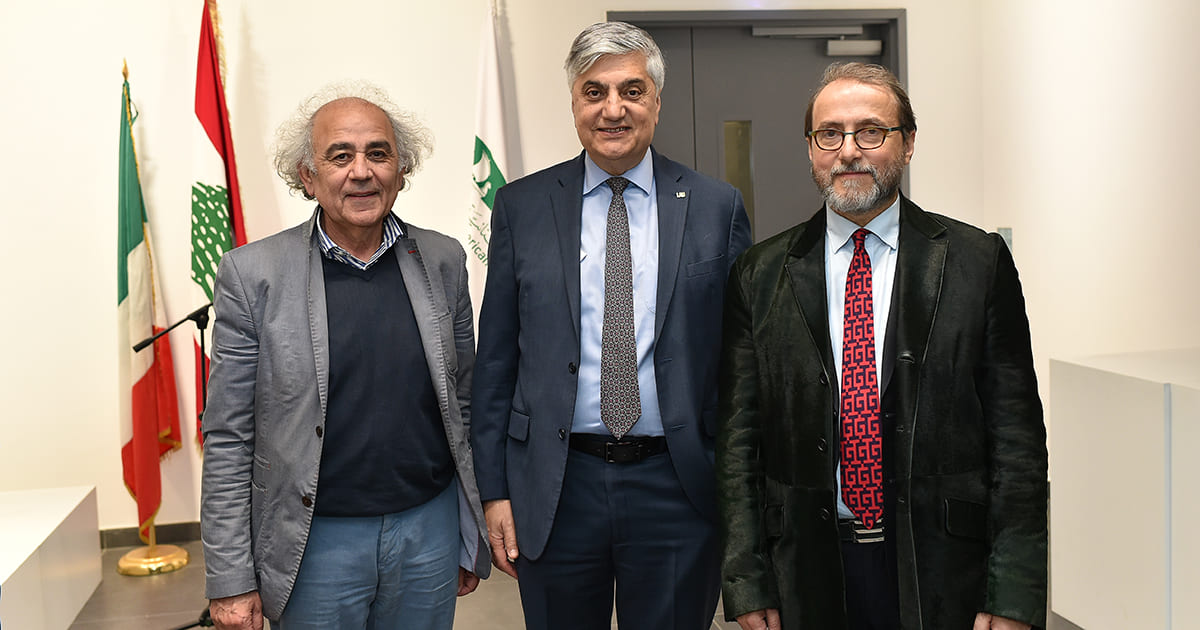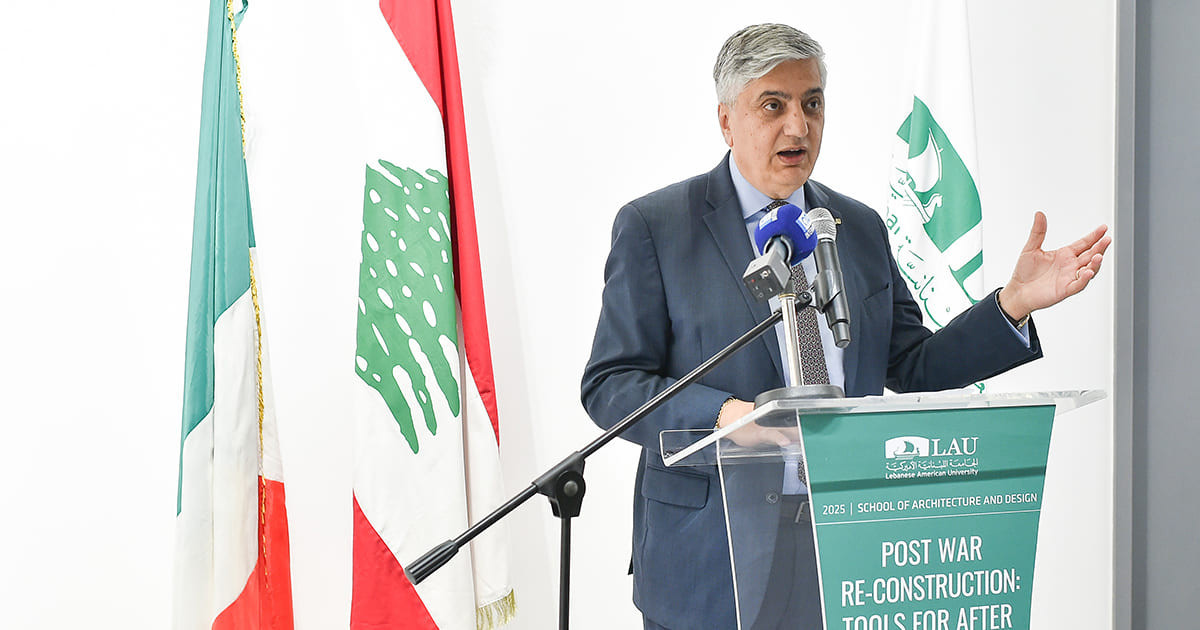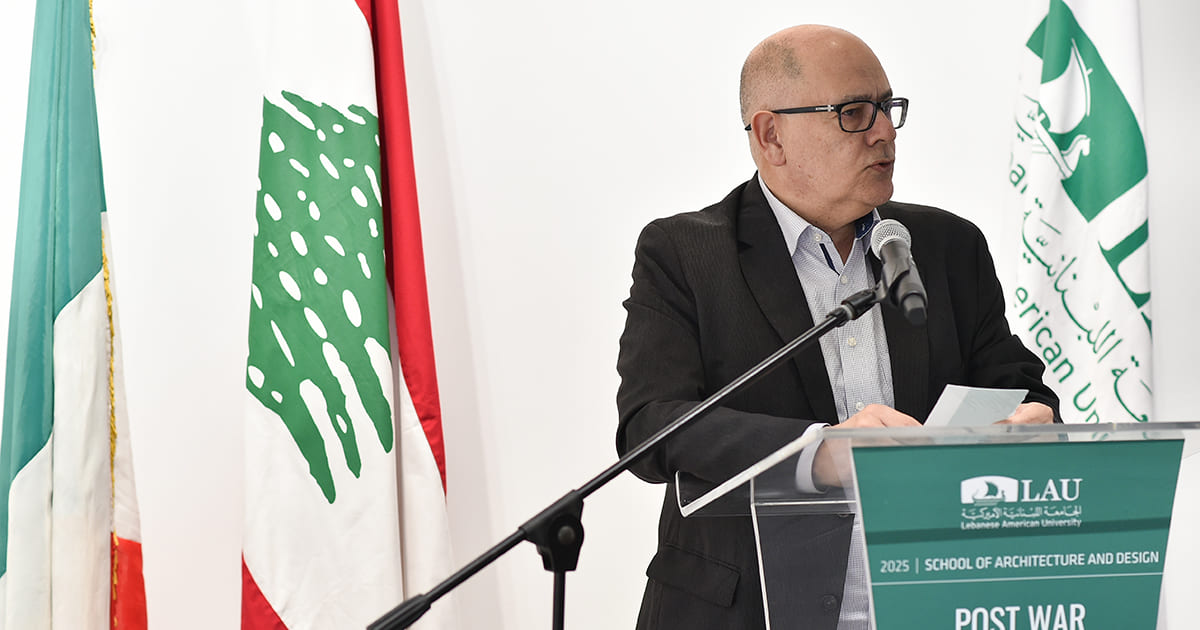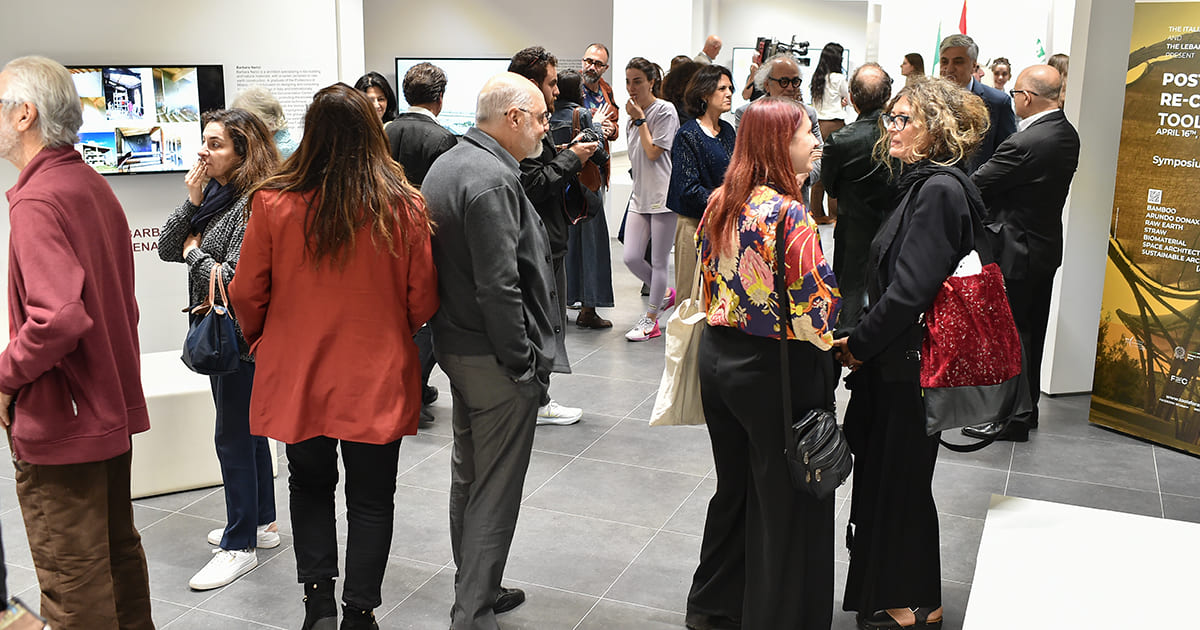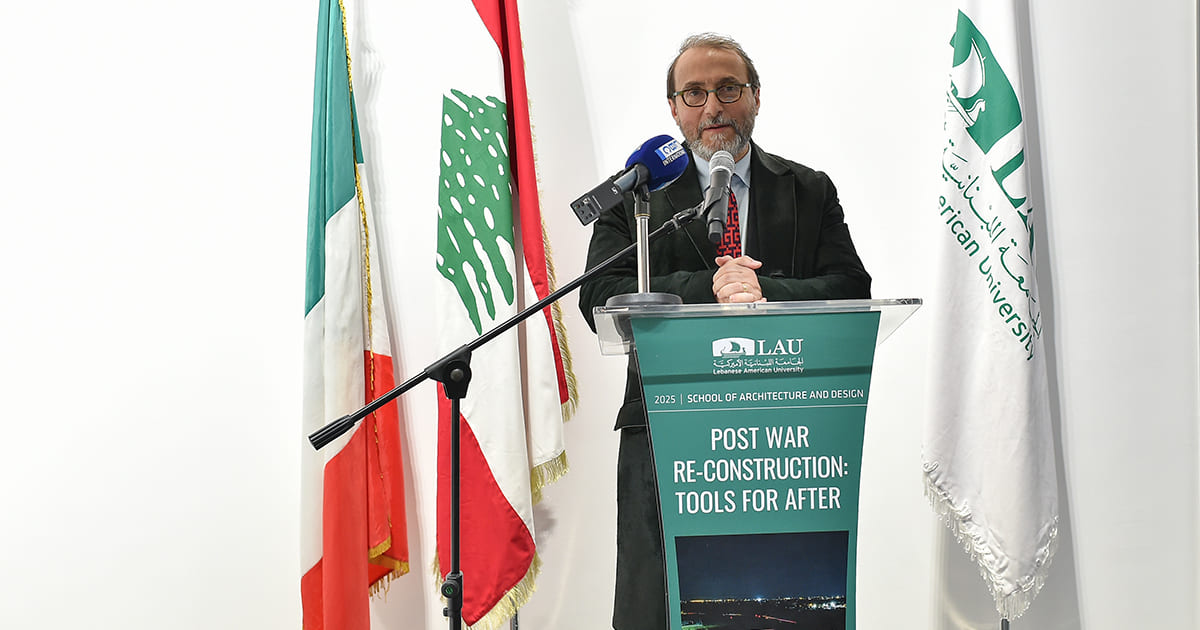From Ruins to Resources: Reimagining Lebanon’s Post-Destruction Urban Spaces
The School of Architecture and Design facilitates a vital dialogue on sustainable reconstruction, urban regeneration, and inclusive development in post-war Lebanon through academic exchange and expert reflections.
Building on the latest international developments in architecture, structural design, and public space interventions, the LAU School of Architecture and Design (SArD), in collaboration with the Italian Embassy and the Italian Cultural Institute of Beirut, held a symposium followed by an exhibition on April 16 on the Beirut campus.
Part of the global initiative Tools for After, the symposium—titled Post-War Reconstruction: Tools for After—brought together renowned Italian architects, researchers, and designers to explore alternative ecological, natural, and biotechnological materials as part of a broader cultural shift toward sustainable construction and rehabilitation practices applicable to post-war Lebanon.
Attendees included the Italian Ambassador to Lebanon Fabrizio Marcelli, Acting Director-General of Lebanon’s Ministry of Industry Chantal Akel—representing the Minister of Industry—the Advisor to the Prime Minister of Lebanon, Joe Issa El Khoury, the Director of the Italian Cultural Institute of Beirut, Angelo Gioé, Dean Elie Haddad, students, faculty and members of the general public.

“Post-disaster reconstruction is not just a process of covering the void, but it is an opportunity to reshape time by addressing the past and present in the design of new select spaces that could generate diversity and create a prospect of renewed meaning,” said Dr. Maroun El-Daccache, event coordinator and associate professor at SArD, in his opening remark at the symposium.
This call to reimagine post-war spaces was reiterated by Ambassador Marcelli, who highlighted the importance of collaboration grounded in sustainability and cultural sensitivity. Drawing on Italy’s long-standing expertise in heritage restoration and urban regeneration, Marcelli emphasized the country’s commitment to contributing experience, innovation, and meaningful partnerships toward rebuilding resilient, future-oriented communities in Lebanon.
“The hope is not only to repair what’s been lost, but to do it better… creating buildings and spaces that are healthier, more adaptive, and more connected to the environment and the communities around them,” he said.
Following this shared vision of thoughtful reconstruction, Dr. Gioé emphasized that rebuilding must go beyond physical restoration. “From bamboo to bioplastics, from ancient earth to spatial architecture, the proposals and projects presented today are part of a wider cultural reimagination that refuses to accept the status quo.”
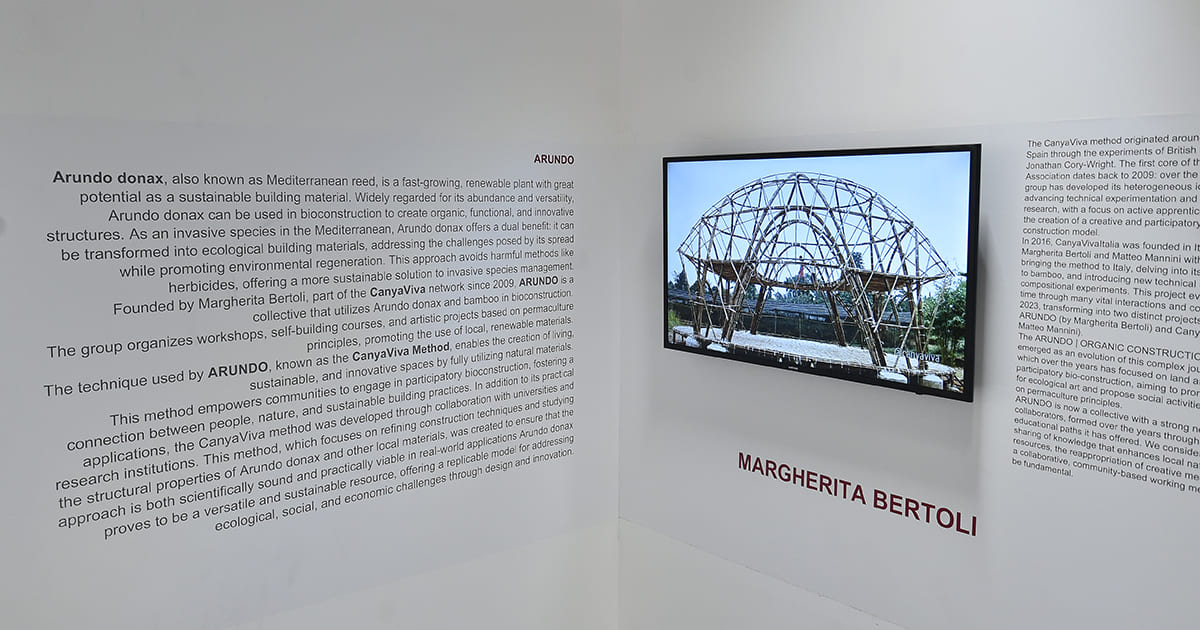
Among the innovative urban renewal approaches discussed at the event was the CanyaViva method presented by Cristina Setti of Arundo Art, which utilizes Arundo donax—a fast-growing, sustainable Mediterranean cane prized for its strength and visual appeal. Maddalena Ferraresi and Barbara Narici of Geologika Collettiva showcased the revival of raw earth, a traditional building material gaining renewed attention for its recyclability, eco-friendly qualities, thermal and acoustic performance, and exceptional workability.
Raw bamboo was yet another versatile, sustainable, and low-carbon alternative to modern construction materials, put forward by architect Mauricio Cardenas Laverde, who displayed projects built with his BooTech system.
“It is pretty incredible that in times of crisis, we go back and we try to learn from our ancestors and see how many of the techniques that they came up with are now being reinvented,” said LAU President Chaouki T. Abdallah in his opening words at the exhibition. “It’s extremely important also as we reconstruct to preserve the cultural heritage.”
Thanking the Italian Embassy, represented by Dr. Gioé at the exhibition, for the numerous collaborations in the past, Dean Haddad expressed his wish to “continue on this path of collaboration for the purpose of educational awareness, offering new opportunities to students, and promoting faculty and student exchanges in the future.”
The exhibition will remain open at the Gezairi Building, LAU Beirut campus, until April 28, 2025, from 10:00 a.m. to 5:00 p.m. (excluding weekends and holidays).
